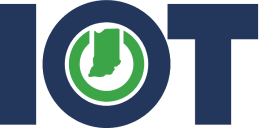Learn how Splunk AppDynamics optimizes hybrid and on-prem application performance with full-stack observability linked to business performance.

Outage-free student services fueled by proactive application performance management
AppDynamics gave UTSA visibility across the school's Ellucian Banner Student Information System (SIS), empowering IT teams to untangle a complex web of applications and make its services easily accessible to the university's 34,000 students.
SIS integrates with dozens of critical processes, including on-boarding, matriculation, financial aid, recruiting, student affairs, compliance, registration, and security. “It was a challenge to pinpoint performance issues in this enormous haystack, but with AppDynamics we have visibility into every process in our SIS and how well it's executing in real-time,” says Galiopoulos.
What this means in practice is that teams can identify and address performance issues across UTSA’s key student services, including the enterprise resource planning (ERP) system, DevOps operations, and PeopleSoft financial management solution.
Application performance management is core to UTSA’s digital strategy. The ability to spot and proactively fix bad code before going live with new services or updates helps Galiopoulos's team ensure online and mobile services run optimally and continue to improve. Enhanced infrastructure and IT performance mean students can access the resources they need to succeed at home, on campus, or anywhere.
“We mapped out ambitious performance metrics to meet the university’s key strategic goals with student success as our guiding light," adds Ketchum. "The insights we receive with AppDynamics are the golden nuggets that help us gauge our progress and stay on track."
Building trust through reliability
One of UTSA’s first priorities was to optimize its ERP system, which underpins essential student services such as financial aid and matriculation. With AppDynamics, the university can access a complete view of the user experience to inform its ERP enhancements, helping it build a reliable and secure system students can trust.
In addition to making UTSA’s IT environment more scalable and responsive during peak usage periods, Galiopoulos’s team optimized the user experience across the student journey. Whether on a computer or mobile device, students can find any service they need with three or fewer clicks (or taps) and get a consistent experience across the board.
“The minute we moved away from outage management to understanding student journeys, we were able to engage with students and improve their experience,” says Galiopoulos. “That’s our job after all — to deliver high-quality services that make our students feel supported, and AppDynamics helps us deliver.”
An exemplar of performance and innovation in higher education
The first test for UTSA and AppDynamics occurred during registration, the busiest time of year for the IT team and a make-or-break moment for student enrollment. Galiopoulos was confident, having reduced application error rates to just .01% with AppDynamics in the 30 days prior to registration. Sure enough, SIS went live with zero latency and no outages, ensuring a smooth registration process for every student.
UTSA saw enrollment rise 5% despite the barriers raised by COVID-19. Meanwhile, IT teams gained confidence in their ability to identify and manage performance issues across the SIS, helping them reduce troubleshooting times from three weeks to just one day.
This confidence extends to UTSA’s relationships with its other technology vendors. With the ability to accurately pinpoint problematic processes across the stack, IT teams can raise tickets in milliseconds, down from nearly a minute. Crucially, they have gained confidence in the performance and responsiveness of UTSA’s student services because they can identify and resolve issues faster and more proactively, all while cutting labor costs.
“Visibility and precision are what made AppDynamics a winner. We became a consistently reliable environment, and then took it one step further with an optimized environment that creates the best experience for our students,” says Galiopoulos.
“It opened our eyes at the code level to help us gain credibility with our students and vendors. As importantly, we gained credibility with the university’s leadership and across the higher education community,” he adds.
Indeed, UTSA has become a beacon for digital access and IT performance among leading universities. “Two years ago, we reached out to another university for help with our digital transformation. Today, they’re the ones contacting us for support,” says Ketchum. “The first thing we recommended they do is enhance visibility across their application layer with AppDynamics.”
It was a challenge to pinpoint performance issues in this enormous haystack, but with AppDynamics we have visibility into every process in our SIS and how well it's executing in real-time.
A true team effort
Ketchum and Galiopoulos continue to drive UTSA’s transformation with two goals: to become an exemplar in operations and to shift IT workloads from outage management to innovation. The release cycle for new student services has already been cut from two years to 4.5 months, and the university’s DevOps team expects to bring that figure down to monthly releases in the coming years.
Behind this ambition is a team fired up by UTSA’s ongoing transformation, one eager to take the student experience into the future. More than 100 employees have come together to reimagine the university’s IT environment, creating a culture of innovation that is turning heads and attracting talent from across the country.
“AppDynamics helped us build an environment that’s more connected to the processes our students and staff use every day,” says Galiopoulos. “This means we can be more strategic about how we use technology in the future, and be more innovative in shaping the student experience.”









